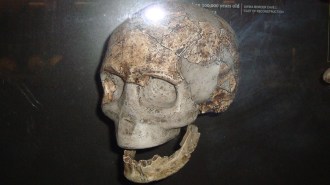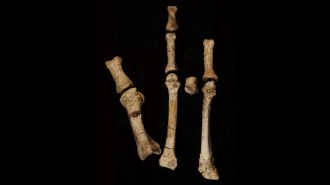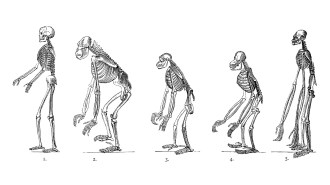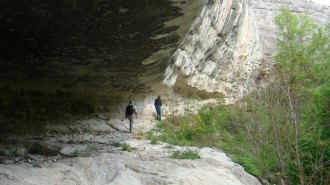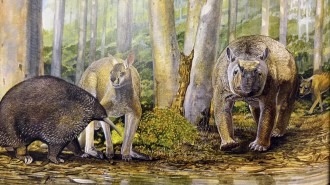New dates narrow down when Denisovans and Neandertals crossed paths
The extinct hominids periodically occupied the same Siberian cave starting 200,000 years ago
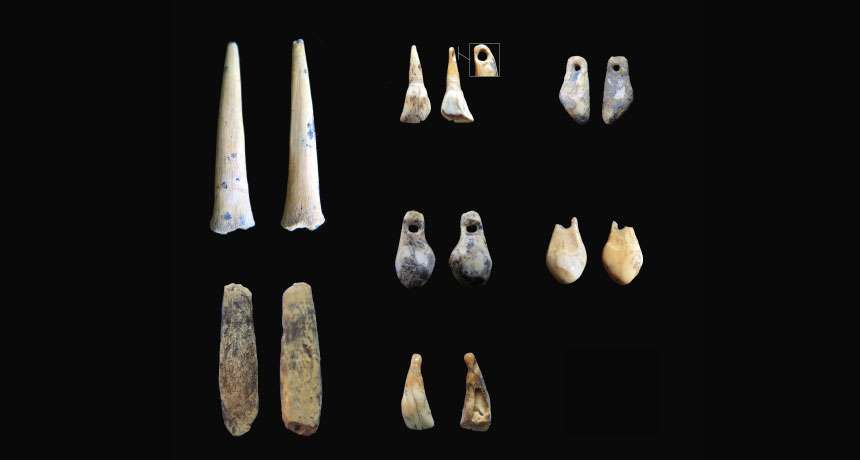
DENISOVAN DESIGNS Bone points and pierced animal teeth dating to around 45,000 years ago from southern Siberia may have been made by enigmatic hominids called Denisovans, researchers say.
K. Douka
Mysterious ancient hominids known as Denisovans and their evolutionary cousins, Neandertals, frequented a southern Siberian cave starting a surprisingly long time ago, two new studies find.
Evidence for visits by those populations to Denisova Cave, beginning by around 200,000 years ago for Neandertals and possibly as early as about 300,000 years ago for Denisovans, appears in the Jan. 31 Nature.
It was known that members of the two extinct hominid species had occupied the Siberian cave at a few points during the Stone Age. But the new evidence offers the best look to date at when Denisovans and Neandertals reached the site, and how the two hominid species may have interacted, including interbreeding.
In one new study, a team led by geoarchaeologist Zenobia Jacobs found that Denisovans occupied the Siberian cave as recently as around 55,000 years ago, while a second investigation, directed by archaeologist Katerina Douka, places the Denisovans’ last stand at the site in roughly the same ballpark. As for Neandertals, they last inhabited Denisova Cave roughly 97,000 years ago, Jacobs’ group estimates.
“It now looks like Denisovans can be placed at the site from close to 300,000 years ago to about 50,000 years ago, with Neandertals there for periods in between,” says paleoanthropologist Chris Stringer of the Natural History Museum in London who did not participate in the research. But it’s still uncertain whether hominid fossils from the cave derive from individuals who died during periodic occupations or whose remains were transported to the site by, say, carnivores, he says.
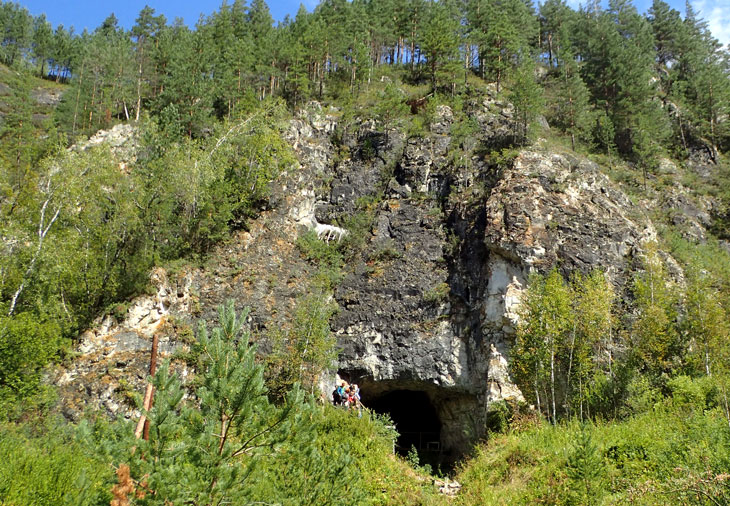
Suggestions by other researchers that Denisovans survived in southern Siberia until perhaps 30,000 years ago could not be verified in the new studies.
Jacobs, of the University of Wollongong in Australia, and her colleagues generated dates for 103 samples from Denisova Cave sediment that has yielded stone tools and hominid fossils. Age estimates rested on calculations of when sediment had last been exposed to sunlight. The oldest Denisovan fossil, a molar tooth, came from sediment now dated to roughly 300,000 years ago. But that fossil may originally have been deposited in sediment above where it was eventually found, making the tooth considerably younger than 300,000 years old, Jacobs’ team says.
Douka, of the Max Planck Institute for the Science of Human History in Jena, Germany, and her colleagues estimated ages for four Denisovans, three Neandertals and three other hominids whose fragmentary remains have been found in Denisova Cave. The team incorporated new and previously obtained age estimates for fossils and sediment, information on original positions of fossils when excavated and comparisons of mitochondrial DNA extracted from fossils.
Until now, ages of Neandertal fossils in northeastern Asia have been scanty and suggestive of a relatively late Stone Age presence. “We did not expect [Denisova Cave] Neandertals to date to before around 120,000 years ago, but sediment that contained Neandertal DNA goes back 200,000 years,” Douka says. That genetic evidence pushes back estimates of when Neandertals first arrived at the Siberian cave based on fossils alone. Relatively warm temperatures apparently encouraged Neandertals to trek north to Denisova Cave, the researchers say.
Scientists knew that Neandertals’ arrival at the cave led to interbreeding with Denisovans. In August 2018, researchers reported that a girl represented by DNA removed from a bone fragment excavated in the Siberian cave had a Denisovan father and a Neandertal mother, the only first-generation hybrid of her kind ever found (SN: 9/15/18, p. 9).
Douka’s team calculates that the hybrid girl lived between 79,300 and 118,100 years ago, earlier than a previous estimate and in alignment with ages of the cave’s other Neandertal fossils. Dating estimates aren’t precise enough to determine if Denisovans and Neandertals occupied the cave at the same time. But the girl’s family must have lived near the cave, if not in it, while Denisovans were there, Douka suspects.
Her team also estimates that animal-tooth pendants and bone points previously unearthed at Denisova Cave date from 43,000 to 49,000 years ago. Although such artifacts have traditionally been linked to Stone Age Homo sapiens, Russian archaeologists on Douka’s team regard Denisovans as the likely makers of these finds. Denisova Cave investigations, which began 40 years ago, have yielded no H. sapiens fossils or DNA.
H. sapiens lived elsewhere in Siberia around 45,000 years ago, though (SN: 11/29/14, p. 8). Since Denisovans date to no later than 52,000 years ago in the new studies, “my money would be on early modern humans” as the makers of Denisova Cave’s pendants and points, Stringer says.
But it wouldn’t be surprising if offspring of Denisovans and H. sapiens fashioned those artifacts, writes archaeologist Robin Dennell of the University of Exeter in England in a commentary published in the same issue of Nature. Interbreeding among H. sapiens, Neandertals and Denisovans may have been more common than scientists realize. In addition to the previous evidence of interbreeding between Neandertals and Denisovans at the cave, Neandertals and H. sapiens are known to have interbred elsewhere in Eurasia.
Editor’s note: This story was updated on February 6, 2019, to correct that Robin Dennell is at the University of Exeter (not the University of Sheffield) and on February 4, 2019, to correct that Denisovans date to no later than (rather than no earlier than) 52,000 years ago at Denisova Cave.


